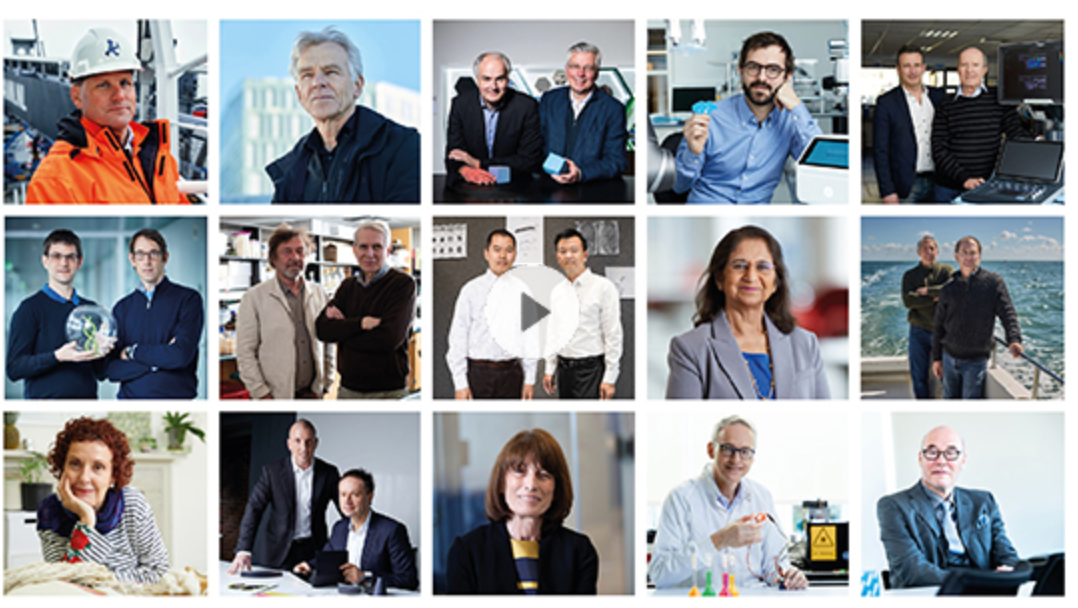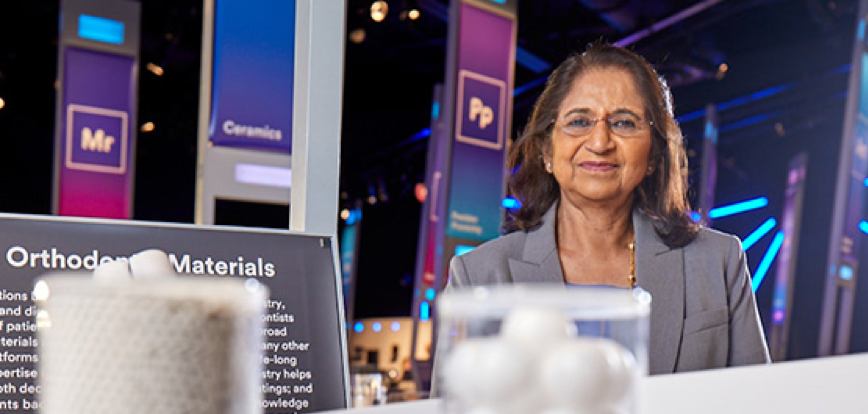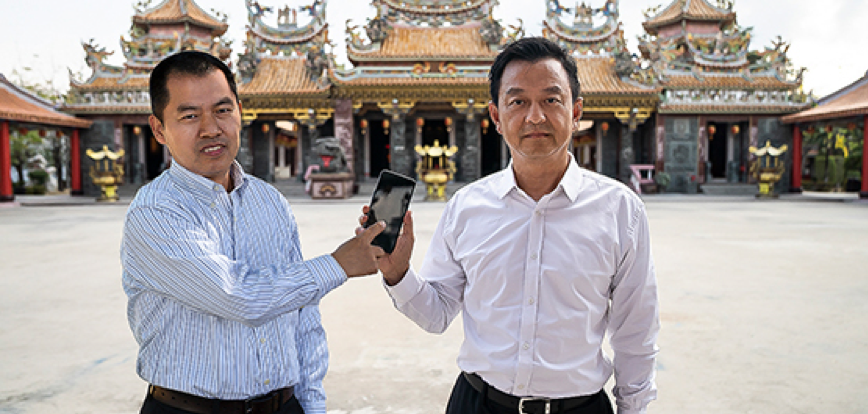“Over her lifetime, Gordana Vunjak-Novakovic has made a major contribution to tissue engineering, one of the most promising ways to prolong the human lifespan and improve quality of life.” -EPO president António Campinos.
 Last week, the European Patent Office (EPO) announced six U.S. researchers as finalists for the European Inventor Award 2021. The EPO began the prestigious European Inventor Award in 2006 to honor individual and teams of inventors in five categories, i.e. Industry, Research, SMEs, Non-EPO countries and Lifetime achievement. The finalists and winners are selected by an independent jury of experts in the fields of business, politics, science, academia and research. In addition, a Popular Prize is awarded based on a public vote wherein the public selects a winner from among 15 finalists through online voting. U.S. researcher Gordana Vunjak-Novakovic was nominated for a lifetime achievement award for devoting her career to “developing an ex vivo tissue engineering technique for more precise tissue cultivation.”
Last week, the European Patent Office (EPO) announced six U.S. researchers as finalists for the European Inventor Award 2021. The EPO began the prestigious European Inventor Award in 2006 to honor individual and teams of inventors in five categories, i.e. Industry, Research, SMEs, Non-EPO countries and Lifetime achievement. The finalists and winners are selected by an independent jury of experts in the fields of business, politics, science, academia and research. In addition, a Popular Prize is awarded based on a public vote wherein the public selects a winner from among 15 finalists through online voting. U.S. researcher Gordana Vunjak-Novakovic was nominated for a lifetime achievement award for devoting her career to “developing an ex vivo tissue engineering technique for more precise tissue cultivation.”
The remaining U.S. finalists were nominated in the “Non-EPO countries” category. In particular, Kim Lewis and Slava S. Epstein were nominated for their development of a device for separating and incubating single strains of bacteria in nature, Sumita Mitra was nominated for pioneering use of nanotechnology in dentistry, and Bo Pi and Yi He were nominated for developing the first fingerprint sensor capable of detecting both a fingerprint’s pattern and the presence of blood flow.
Gordana Vunjak-Novakovic – Advances in Tissue Engineering

Gordana Vunjak-Novakovic
Serbian-American Gordana Vunjak-Novakovic was nominated for the Lifetime Achievement Award for advances in tissue engineering. She is a Professor at Columbia University and has dedicated her life’s work to regenerative medicine. She is a highly cited engineer with over 53,400 citations and more than 420 journal articles. Her European patents include EP2408401 and EP1112348. Vunjak-Novakovic recognized the need for an alternative to the mainstream approach of replacing damaged tissue, which included combining cells and biomaterials and inserting them into the body so the transplant could regenerate tissues. Her groundbreaking alternative approach included “growing cells in a laboratory by carefully controlling environmental factors like temperature, pH, nutrients, and oxygen, to issue the type of tissue they developed into, and then implanting this in the body.”
Vunjak-Novakovic’s work focused on facial surgery and included creating a 3D model, developing a scaffold from a piece of pig or cattle bone of the same shape, and populating the scaffold with the patient’s stem cells. The scaffold is then grown in a bioreactor that mimics the environment of the human body.
“Over her lifetime, Gordana Vunjak-Novakovic has made a major contribution to tissue engineering, one of the most promising ways to prolong the human lifespan and improve quality of life. Her scientific innovation, entrepreneurial mindset and patented inventions offer the prospect of safer rehabilitative medicine in musculoskeletal, heart and lung conditions, welcoming a new era in regenerative medicine”, commented EPO president António Campinos.
Kim Lewis and Slava S. Epstein – Groundbreaking “iChip”

Kim Lewis and Slava S. Epstein
Northeastern University’s Kim Lewis and Slava S. Epstein were nominated for their work in developing the ‘iChip’ device, i.e., “isolation chip.” Lewis and Epstein both grew up in the former Soviet Union. Lewis was born in New York and moved to Russia with his mother, where he received a PhD in biochemistry from Moscow University in 1980. He is a Distinguished Professor of biology and founder and director of Northeastern University’s Antimicrobial Discovery Center. Lewis is also a fellow of the American Academy of Microbiology and of the American Association for the Advancement of Science (AAAS). Epstein emigrated to the United States and joined the University of Wisconsin in 1991 as Assistant Scientist. He later became a Lecturer, then Senior Scientist and Professor at Northeastern University, where Lewis and Epstein began their pioneering work in microbiology.
The iChip is a thumb-sized device that captures single microbial cells and sustains them through exposure to nutrient-rich soil using a polycarbonate semi-permeable membrane. Each of their European patents, EP1456401 and EP1999248, relates to tools for cultivating microbes. Epstein and Lewis recognized that only 1% of microbial cells produce colonies in a petri dish and were the source of virtually every antibiotic and current antibiotics are at risk of being ineffective due to the formation of antibiotic resistant “superbug” bacteria. The iChip “isolates bacterial cells in compartments and sustains them with nutrients from soil.” Lewis and Kim’s work has led to the development teixobactin, the first new class of antibiotics in decades. EPO President António Campinos commented, “Epstein and Lewis have created a tool that enables scientists to access and cultivate microorganisms that were not available before. This could help researchers find new antibiotics, tackle drug resistance and, ultimately save lives. And they show how patents play an important role in turning innovation into a business.”
Sumita Mitra – Nanotechnology in Dental Materials

Sumita Mitra
Indian-American chemist Sumita Mitra was the first to develop a nanomaterial-based composite dental filler for repairing teeth. Her European patent numbers include: EP1225867,
EP1227782, EP1229886, and EP1771143. Previous dental fillers included microfillers, which were not as strong, or hybrid composites, which were not as aesthetically pleasing. Nanotechnology was an early emerging field of research while Mitra was working in the Oral Care Division of 3M. Mitra noted that the problem with previous solutions was in the particle size: “hybrid composites were milled from quartz, glass or ceramics [and through] daily use, the resin would wear away and the particles begin to protrude.” She sought to replace composite dental “fillers with ultrafine nanoparticles measuring between 1 and 100 nanometers in diameter, smaller than the wavelength of visible light, resulting in a material which retains its shine.” In addition, Mitra and her team developed “nanoclusters”, i.e., linked clusters of nanoparticles that combine single nanoparticles of varying diameters and result in “a strong, durable and shiny material, with excellent handling properties.” Her team also created a range of shades to match individual patients’ teeth by adding small amounts of pigment and altering the nanoparticles’ chemical composition. Mitra’s innovative filler, FiltekTM Supreme universal restorative, was commercialized and launched by 3M in 2002. Improvements continue to be made based on her patented material and newer generations of Filtek were introduced in 2005, 2012 and 2019. Mitra retired from 3M in 2010, after 32 years of service, and she continues to contribute to research and development through her own consulting company.
EPO President António Campinos commented: “Mitra’s invention takes what was an emerging technology at the time – nanotechnology – and applies it to a new sector to provide a solution for dentists and relief for patients. Patents have protected Mitra’s material and helped ensure that her invention remains commercially successful nearly 20 years after its launch.”
Bo Pi and Yi He – Fingerprint Technology

Bo Pi and Yi He
Chinese-American researchers, Bo Pi and Yi He were nominated for the development of a pioneering device that is capable of sensing both a fingerprint’s pattern and the presence of live blood flow. Their technology is the subject of EP3072083 and is used as a security feature for smartphones. Recognizing that previous mobile security scanners did not offer enough security because “conventional fingerprint sensors can be duped by 2D renderings of a fingerprint, or even by 3D silicone fingers” Pi and He created a device that detects the presence or lack of blood flow when an object is pressed against it. They noted that infrared light sensors could be used to measure a finger pulse and that pressing a finger against a sensor forces blood out of the capillaries. Based on these findings, they developed the Live Finger DetectionTM (LFD) sensor that is capable of capturing the changes in blood flow while simultaneously mapping the user’s fingerprints. “Pi and He’s technology delivered an industry-leading biometric solution. Their invention shows how innovation can help protect our privacy and security,” said EPO President António Campinos. Their patented invention was commercialized by Shenzhen Goodix Technology and “quickly gained prominence after its launch in 2016, allowing Goodix to list manufacturers LG Electronics, Huawei and Samsung Electronics among the companies using their solution.”
Goodix is preparing to introduce the technology in various devices used in the automotive industry and others. Pi works as the Chief Technology Officer at Goodix, and He is Goodix’s Director of Research and Development. They continue working together from Goodix’s U.S. development office in San Diego, where they collaboratively identify technological challenges that impact society and explore ways to overcome them.
The winners of the 2021 EPO annual innovation prize will be announced at a ceremony starting at 1:00 pm EDT (19:00 CEST) on June 17, which will be held as a digital event for a global audience.
The award did not take place in 2020 due to the pandemic, so the short-listed finalists were deferred to the 2021 edition.

![[IPWatchdog Logo]](https://ipwatchdog.com/wp-content/themes/IPWatchdog%20-%202023/assets/images/temp/logo-small@2x.png)

![[Advertisement]](https://ipwatchdog.com/wp-content/uploads/2024/04/UnitedLex-May-2-2024-sidebar-700x500-1.jpg)
![[Advertisement]](https://ipwatchdog.com/wp-content/uploads/2024/04/Artificial-Intelligence-2024-REPLAY-sidebar-700x500-corrected.jpg)
![[Advertisement]](https://ipwatchdog.com/wp-content/uploads/2024/04/Patent-Litigation-Masters-2024-sidebar-700x500-1.jpg)

![[Advertisement]](https://ipwatchdog.com/wp-content/uploads/2021/12/WEBINAR-336-x-280-px.png)
![[Advertisement]](https://ipwatchdog.com/wp-content/uploads/2021/12/2021-Patent-Practice-on-Demand-recorded-Feb-2021-336-x-280.jpg)
![[Advertisement]](https://ipwatchdog.com/wp-content/uploads/2021/12/Ad-4-The-Invent-Patent-System™.png)






Join the Discussion
No comments yet.